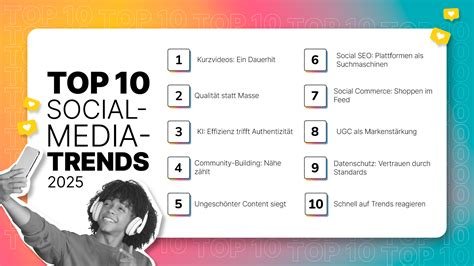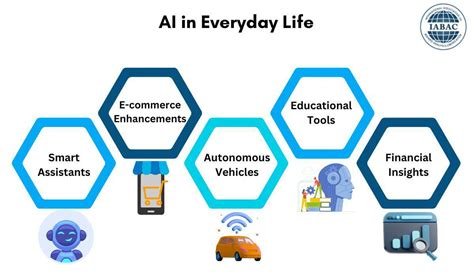In the blog post How to Create Simple yet Spectacular Meals Every Day, readers learn the art of transforming everyday cooking into an enjoyable experience. The introduction highlights the importance of simplicity while aiming for spectacular results. The article provides practical strategies on how to efficiently plan weekly meal preparations, ensuring a stress-free cooking routine. Essential ingredients that can instantly elevate meals are discussed, emphasizing how a few key items can dramatically enhance flavor and presentation. The conclusion encourages readers to embrace the joy of cooking, suggesting that with the right approach and ingredients, creating delightful meals can become a daily pleasure. This post is an invaluable resource for anyone looking to simplify meal prep while impressing family and friends with delicious dishes.
Introduction To Creating Simple Yet Spectacular Meals
Creating meals that are both simple and spectacular is an art that anyone can master with just a little practice and the right approach. Understanding how to bring your culinary ideas to life requires not only basic cooking skills but also an appreciation for fresh ingredients and creative combinations. With a mindset geared toward simplicity, you can create dishes that not only impress but also fulfill the practical needs of daily life.
One of the primary goals in cooking is to develop flavors and textures that excite the palate without overwhelming yourself in the kitchen. Having a clear idea of how to simplify your meal preparation opens the doors to countless possibilities. By focusing on essential techniques and using readily available ingredients, you can produce visually stunning and delicious dishes that your family and friends will love.
Key Reasons for Cooking Simple Meals
- Quick preparation time allows for more free moments in your day.
- Fewer ingredients make grocery shopping easier and more economical.
- Reduces stress in the kitchen, enhancing your overall cooking experience.
- Encourages creativity using basic techniques and spices.
- Supports a healthier lifestyle by focusing on fresh, whole foods.
- Easier to replicate, making it possible to share favorites.
With the right mindset and a few essential ingredients, how to create simple yet spectacular meals becomes a manageable skill. Embracing a cooking philosophy that prioritizes ease and enjoyment will allow you to transform ordinary days into culinary adventures. As you develop your skills, remember that every great chef started with simple recipes that evolved over time into their signature dishes.
How To Plan Your Weekly Meal Preparation Efficiently
Efficient meal preparation can transform your cooking experience, making it more enjoyable and less time-consuming. By learning how to plan your weekly meals, you can ensure that you have healthy, delicious food ready to go whenever you need it. This method not only saves you cooking time during the week but also helps you stick to your nutritional goals and budget effectively. With a well-structured meal plan, you can eliminate the daily stress of deciding what to cook while maintaining variety in your diet.
To set yourself up for successful meal planning, following a few key steps can be immensely helpful. This organized approach allows you to incorporate a range of foods, which in turn supports a balanced diet. Furthermore, understanding the importance of various food groups ensures that you create meals that are not only flavorful but nourishing. Here’s a structured list to guide you:
Steps to Efficient Meal Planning
- Assess your dietary requirements and preferences.
- Select recipes that you want to prepare for the week.
- Create a shopping list based on your chosen recipes.
- Designate a specific day for meal prep.
- Cook and store your meals in appropriate containers.
- Label containers with dates for easy identification.
- Make adjustments based on feedback each week.
With this list in hand, you’re well on your way to mastering the essential elements of meal preparation. To further enhance your meal planning experience, it’s crucial to consider how to create a balanced menu that includes a variety of nutrients, textures, and flavors. This will not only keep your meals interesting but also contribute to your overall health.
Tips For Creating A Balanced Menu
When developing your weekly menu, strive to include a mix of protein, whole grains, healthy fats, fruits, and vegetables. This variety lays the foundation for balanced meals. Consider incorporating different cooking methods, such as baking, grilling, and steaming, to add diversity to your dishes. Additionally, thinking outside of typical meal times can introduce exciting options like breakfast-for-dinner or smoothie bowls. Remember, staying flexible and open to trying new combinations can lead to delightful culinary discoveries.
Tools To Simplify Meal Prep Process
Equipping your kitchen with the right tools is vital for efficient meal preparation. A few essential items include a sharp chef’s knife for precise cutting, a good set of cutting boards for easy food handling, and quality storage containers for meal management. Investing in a slow cooker or Instant Pot can also simplify the cooking process significantly. These tools help you save time and make your cooking experience smoother, allowing you to focus on the joy of preparing how to create tasty meals that your family will love.
Essential Ingredients That Elevate Meals Instantly
When it comes to cooking, the right ingredients can make all the difference. Understanding how to select and utilize must-have ingredients can transform your daily meals into spectacular dishes without much effort. With a well-stocked pantry, your cooking sessions can become shorter and more enjoyable, while also improving the flavor of your meals exponentially. Incorporating these essential ingredients often requires just a little creativity and some culinary know-how.
Top 10 Must-Have Ingredients
- Olive oil – for sautéing and dressing
- Garlic – adds depth and flavor
- Fresh herbs (like basil and parsley) – enhances freshness
- Chili flakes – for a touch of heat
- Salt – a fundamental flavor enhancer
- Vinegar (balsamic or apple cider) – for acidity
- Canned tomatoes – a versatile base for many dishes
These ingredients are powerful allies in the kitchen. They can elevate even the simplest meals without requiring complex cooking techniques. For instance, a drizzle of high-quality olive oil or a sprinkle of fresh herbs can take a basic salad from bland to brilliant. Understanding how to pair these ingredients can lead to delightful meal creations that impress family and friends alike.
Creative Combinations To Try
Once you have your essential ingredients ready, it’s time to experiment with different combinations. A few simple pairings can create harmony on your plate and tantalize your taste buds. For example, consider mixing garlic and olive oil with roasted vegetables for a stunning side dish. The right combinations not only enhance flavor but also boost the nutritional value of your meals. Similarly, combining canned tomatoes with fresh basil and a hint of chili flakes can transform a plain pasta dish into a gourmet experience, showcasing just how beneficial it is to explore creative culinary fusions. When you know how to blend these ingredients effectively, your kitchen can become a palette for flavor exploration.
Conclusion: Transform Your Daily Cooking Into A Pleasure
Embracing the art of cooking can profoundly impact your daily life. Not only does it foster creativity and health, but it also transforms routine meals into delightful experiences. By understanding how to elevate your cooking skills, you open doors to endless culinary possibilities that can excite your palate and ignite your passion for food. With simple techniques and thoughtful planning, every meal can be a celebration of flavor and satisfaction.
To foster such a transformation, consistency is vital. Creating a delightful cooking experience doesn’t require elaborate recipes or expensive ingredients. Instead, it revolves around integrating fundamental principles into your daily routine. Practicing these principles allows you to effortlessly create flavorful dishes, ensuring that every meal is a masterpiece waiting to happen.
“Cooking is like love. It should be entered into with abandon or not at all.” – Harley C. C.
As you integrate these practices into your cooking, the process itself will become a cherished part of your day. It’s not merely about following recipes but rather about expressing yourself through flavors, textures, and aromas. By focusing on the journey rather than the destination, you can appreciate every step, making cooking an enjoyable pastime rather than a chore.
Actionable Tips For Daily Cooking Success
- Plan your meals at the start of each week to streamline shopping and prep.
- Incorporate seasonal ingredients to enhance flavor and freshness.
- Keep a well-stocked pantry with essential herbs and spices.
- Experiment with different cooking techniques to discover new flavors.
- Involve family or friends in the cooking process to make it a social event.
- Set a relaxed cooking environment by playing music or engaging with good company.
- Don’t be afraid to improvise—some of the best dishes arise from spontaneous creativity.
Ultimately, exploring how to transform your cooking can turn everyday meals into extraordinary culinary experiences. Cherish the process, stay curious, and let your kitchen be a place of joy and discovery. By following these actionable tips, you will not only improve your skills but also foster a deeper appreciation for the art of cooking.









